As the next school year comes closer, begin to plan for better parent meetings. Demonstrate that you value parents as co-missioners in passing on the faith. Communicate in words and deeds that Jesus—through you—loves them and is listening to them. Prepare a comfortable and attractive meeting space. If your parent meetings are in a classroom, rearrange the desks into friendly circles or provide adult-sized chairs. Have a meaningful opening and closing prayer.
 Make the meeting a conversation rather than a lecture. Provide opportunities for parents to talk to you and to one another about questions that matter. Some conversation starters:
Make the meeting a conversation rather than a lecture. Provide opportunities for parents to talk to you and to one another about questions that matter. Some conversation starters:
- How is the world different now than when you were growing up?
- What do you hope your children will remember that you were trying to teach them?
- What are your biggest worries for your children now?
- What difference has technology made in your family’s lifestyle?
- What are key values that you want to pass on to your children?
Blest Are We Faith in Action Director’s Resource, pp. 71-72, has more plans for parent gatherings.
Resources for supporting parents and families. Your faith formation programs have excellent resources for engaging with parents and helping them share the Good News at home.
- Blest Are We Faith in Action makes family faith formation a priority, starting each chapter with Take Home pages. Reinforce the efforts of parents by echoing the messages from the Take Home pages in your classroom lessons. Reviewing the Take Home pages in the classroom helps children understand that you and their parents are partners in their faith formation.
- Stay in touch with parents by sharing links to digital versions of the Take Home pages and video resources, available in the Grade Level Organizer pages of your Flourish website.
- Family Life student books and Parent Connection booklets help parents know how to talk with their children. Share links to Catholic Parenting 101 and Videos from Experts, all found in the Grade Level Organizer in Flourish.
Not all parents will be as engaged as you hope. Your students come from homes with a wide variety of church practice and affiliation. Yet, their parents have chosen your Catholic school or parish program to be their partner in guiding their children’s moral and faith development. We need to walk alongside parents with humility and patience and develop what Pope Francis has called a “spirituality of accompaniment.” Given time and encouragement, parents who have spent years on the edges of parish life may be inspired to become more actively involved.
Celebrate each step parents take toward a stronger family life and deeper faith. Pope Francis said that he dreams of a Church with its arms wide open—like the arms of the father of the Prodigal Son—where there is a place for others, no matter what is happening in their lives (The Joy of the Gospel, no. 47). Let this also be our dream for the parents of our students.
 About the Author
About the AuthorDr. Lauri Przybysz specializes in equipping families to live their vocation to be domestic churches and signs of God’s love. Lauri received the Doctor of Ministry from the Catholic University of America, and she has been both a Catholic middle school religion teacher and a faith formation coordinator at the archdiocesan and parish levels. She is the mother of six children and grandmother of 21.
Product Highlight
 Blest Are We Faith In Action for Schools
Blest Are We Faith In Action for Schools
Give students a solid foundation to put faith into action!
RCL Benziger is your Complete Solution for distance, hybrid, and classroom learning, providing you with engaging, high-quality Catholic religious education resources for the classroom and the home. We are committed to providing outstanding resources for students, teachers, and families no matter what learning environment you find yourself in.
Blest Are We Faith in Action - School Edition Grades K-8
The Blest Are We Faith in Action religious education program engages children, youth, and their families in learning what Catholics believe, how Catholics worship, how Catholics pray, and how Catholics live. Our technology-enhanced learning resources, including eGuides, eBooks, eAssessments, and online chapter reviews, expand student learning opportunities and teacher flexibility.
This week's latest foray into grandparenting included taking three of my young grandsons to their gymnastics class. I'll admit I was a bit nervous, not so much because of the rigorous activities they'd be involved in but wondering how I could keep my eyes on all three of them at once for two hours.
My worries were unfounded, and I discovered the joyful world of children mastering their bodies, particularly the youngest. I watched my four-year-old line up excitedly with other children as they leaped from booster bags with arms outstretched, attempting to grab onto an overhead bar and swing before falling into a foam pit.
Multiple times he made an effort only to miss the bar and fall directly into the pit, except with his coach's help, who would hold children around the waist and help propel them forward and upward so their hands could reach the bar.
 He wanted to do it by himself on his last try, so we expected a quick landing in the pit. Only this time, he kept his eyes on the bar, leaped forward, and grabbed the bar with both hands. I don't know who was more surprised – his coach, me, or him. As he scrambled out of the pit, he turned around and proudly yelled to his coach, "I don't need you!"
He wanted to do it by himself on his last try, so we expected a quick landing in the pit. Only this time, he kept his eyes on the bar, leaped forward, and grabbed the bar with both hands. I don't know who was more surprised – his coach, me, or him. As he scrambled out of the pit, he turned around and proudly yelled to his coach, "I don't need you!"
Renowned educator Maria Montessori had a motto based on the natural desire of children: "Help me to help myself." My grandson's coach was doing just that every day.
It's a wonderful, motivating experience for children when they learn they can do things by themselves, and it's the responsibility of parents and educators to engage them in a process that will bring them to that point, not only in the realm of physical activity but in learning how to think.
In the realm of thought, children move from absorbing information to making connections, from facts and rules to reasoning. Most of us have encountered that child who seems to know only one word, "Why?" It can be an uncomfortable question, especially when teaching religion, because we may not have an answer or personal doubts.
A "why" question is a wonderful sign that children want to learn, and there is nothing wrong with replying, "I don't know, but let's find out together."
How do we do that in a religion class?
Memorize this Scripture verse – "For the Lord gives wisdom, from his mouth come knowledge and understanding" (Proverbs 2:6). Not only does this verse remind us that the greatest of mental achievements – wisdom – comes from God, but that wisdom builds upon both knowledge and understanding. There's a reason all three are separate gifts of the Holy Spirit and not rolled into one.
Evaluate your teaching – Are you focusing more on imparting knowledge to your students, or are you also providing opportunities for students to ask and come to an understanding of the "why" questions?
Pose the "why" or "what if" questions yourself – If your students are of an age to begin reasoning, pose a question to the class and let them discuss it in groups and then share their various answers. "Why didn't Jesus escape from the Garden of Gethsemane?" "What if Jesus' Apostles fought the Roman soldiers who came to take Jesus away?" These questions provide an opportunity to discuss several principles of the Catholic faith, including peace and sacrifice.
Making faith their own – Many parents and teachers put their hearts into teaching children about their Catholic faith, and still, when students reach adulthood, they disconnect from the Church. There is no magic formula for stopping that from happening, but engaging children in their faith and enabling them to see the fruits of an active, life-giving faith will help them decide for themselves to embrace their Catholic faith. Within a school community, there are unlimited opportunities to involve students in doing for others. Ask them for ideas and see what comes up.
 About the Author
About the AuthorMary Regina Clifford Morrell, mother of six and grandmother to nine, is a Catholic journalist, author, and syndicated columnist who has served the dioceses of Metuchen and Trenton, New Jersey, and RENEW International in the areas of catechesis and communication.
Product Highlight
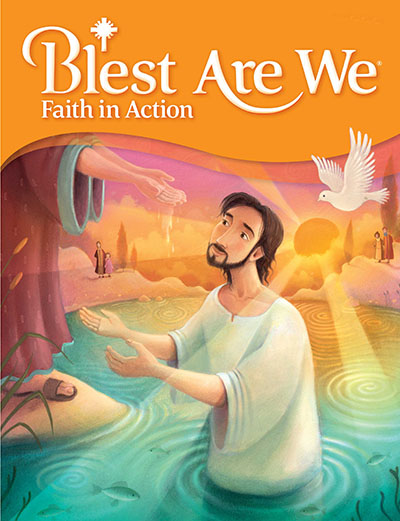 Blest Are We Faith in Action
Blest Are We Faith in Action
Give students a solid foundation to put faith into action!
RCL Benziger is your Complete Solution for distance, hybrid, and classroom learning, providing you with engaging, high-quality Catholic religious education resources for the classroom and the home. We are committed to providing outstanding resources for students, teachers, and families no matter what learning environment you find yourself in.
Blest Are We Faith in Action - School Edition Grades K-8
The Blest Are We Faith in Action religious education program engages children, youth, and their families in learning what Catholics believe, how Catholics worship, how Catholics pray, and how Catholics live. Our technology-enhanced learning resources, including eGuides, eBooks, eAssessments, and online chapter reviews, expand student learning opportunities and teacher flexibility.
My mother-in-law was a devout Catholic who, as a child, was educated in a convent. She devoted herself to the Holy Spirit and had a penchant for making a point in quiet, unexpected ways. She was an artist, a dressmaker, and imbued with the creative spirit in all things.
When my father-in-law died, she joined the Jewish Community Center. She said it was because they had a better pool than the YMCA and were closer to home. Still, from her many stories, I got a distinct impression that she relished being the only Catholic among a group of Jewish ladies, learning from them and taking every opportunity to share her Catholic values. She made many lasting friendships there.
She was a woman of courage, proud and vocal about her faith even in a culture that stood in strong opposition to some of the basic tenets of Catholicism. In that sense, she was very much like Saint Kateri Tekakwitha, the first Native American saint.
Kateri was born in 1656 near what is today Auriesville, New York, to a Mohawk chief and a Christian Algonquin mother. When she was a child, she contracted smallpox, which took the lives of her parents and younger brother. The disease also left her face disfigured.
At 19, a missionary came to the village, and Kateri asked to be baptized. She took the name Kateri-Catherine on Easter Sunday. Kateri was mistreated in the village, ostracized, and ridiculed. She decided to leave her home and make the 200-mile walk to Montreal to a Christian Indian village there.
For the next three years, Kateri devoted herself to her faith, especially the Eucharist, spending long hours praying, fasting, and doing penance, while she taught children and cared for the elderly. She also took a vow of virginity to be fully dedicated to God. She grew in holiness living an ordinary life in challenging conditions. She died when she was 24, weakened by smallpox and her strict penances.
When Kateri was canonized on October 21, 2012, by Pope Benedict XVI, he reminded the faithful of her role as a model for all Christians: "Kateri impresses us by the action of grace in her life despite the absence of external help and by the courage of her vocation… In her, faith and culture enrich each other! May her example help us to live where we are, loving Jesus without denying who we are."
Living our faith wherever we are is sometimes tricky. Having a community to support us – family, friends, and fellow parishioners – provides the support we sometimes need to be courageous Catholics.
The same is true for students. The world they live in is no longer faith-based. It is possible the only encouragement they receive to live the way Jesus taught Christians to live, outside of their family, is from their school community.
It's a powerful and important responsibility for Catholic school teachers, staff and administrators, and the missionary disciples who help to keep the faith alive.
Saint Kateri Tekakwitha, Lily of the Mohawks, is the patron saint of indigenous people and Canada's patroness and is also venerated as the patroness of ecology.
To learn more about Saint Kateri and other saints who can serve as role models for students, visit RCL Benziger's online Saint Resource, which includes a saint index and saint listings.
 About the Author
About the AuthorMary Regina Clifford Morrell, mother of six and grandmother to nine, is a Catholic journalist, author, and syndicated columnist who has served the dioceses of Metuchen and Trenton, New Jersey, and RENEW International in the areas of catechesis and communication.
Product Highlight
Family Resources
The family is where children first experience love, and the home is the first school of discipleship. Supported by Christian communities, families have an essential role in children's faith formation. RCL Benziger provides resources that recognize the diverse needs of families and Catholic communities and are adaptable to faith formation models based in homes, schools, or parishes.
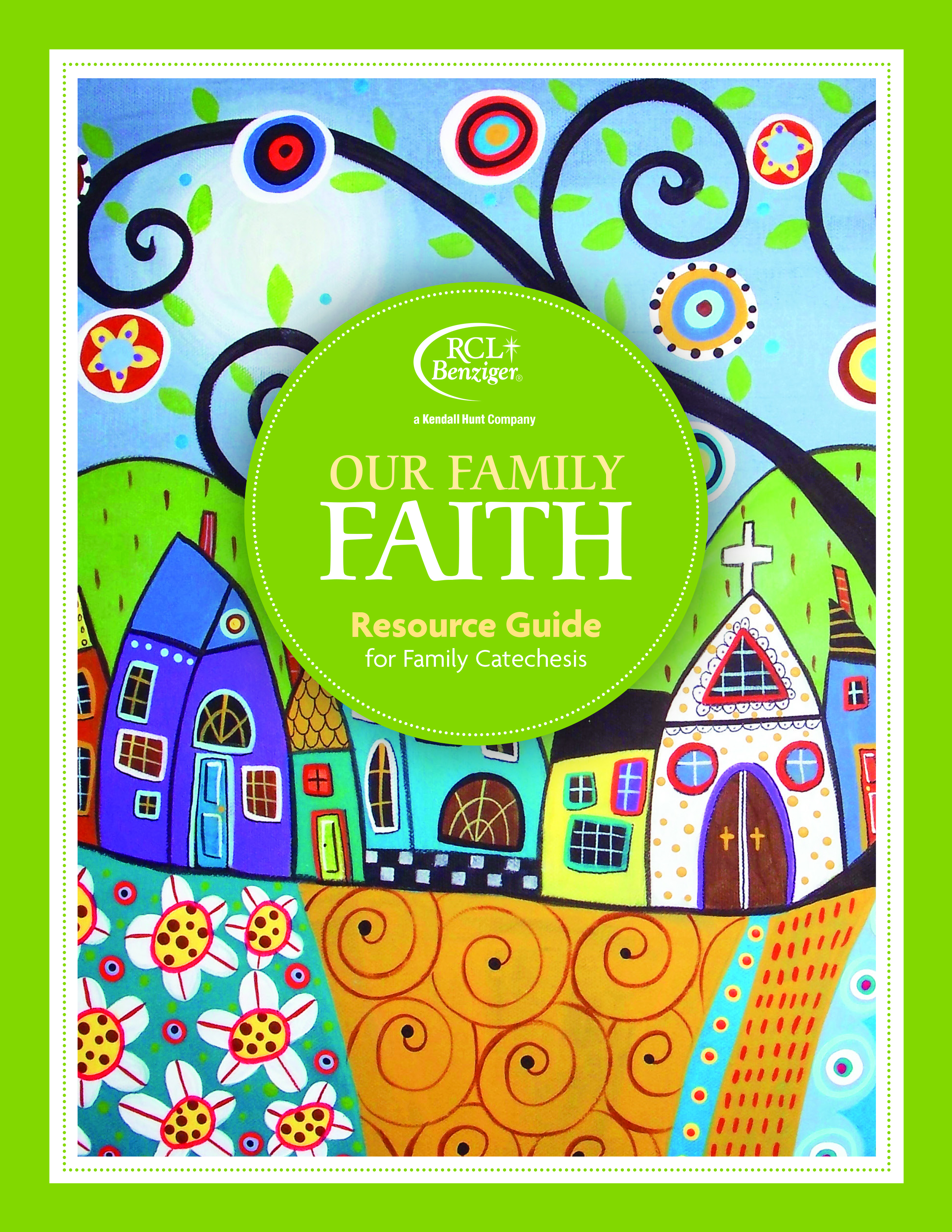 Our Family Faith
Our Family Faith
When catechetical leaders asked for faith formation models that better engage families and support parents as the primary catechists of their children, we recognized the need for flexible and customizable resources that are simple, affordable, and effective. Our Family Faith: Resource Guide for Family Catechesis provides catechetical leaders with the tools needed to engage entire families and is packed with practical suggestions!
 Our Family Devotions
Our Family Devotions
Celebrate how people of different cultures express the Catholic faith in their churches, neighborhoods, and homes. As the Good News of Jesus spread worldwide, people in every culture found unique ways to express their faith in God. Through the ritual words and gestures of popular devotions, Catholics show their love for God and devotion to Mary and the saints.
Robert Frost, a renowned American poet, was also a teacher, so he knew what he was talking about when he said, "I am not a teacher, but an awakener."
As an awakener, teachers enable students to learn information and develop critical thinking skills, hone insights, become courageous learners who are not afraid to fail, and grow spiritually and emotionally.
When it comes to faith formation, it's essential for teachers, who are also spiritual leaders, to have what they want to see developing in their students – a growing relationship with God in an environment that encourages children to seek God and respond to God's grace.
That's a lot for one person to bring to students year after year and can best happen when teachers have time to support each other as colleagues and spiritual companions on a journey. It's not only an aid to better teaching. More importantly, it is a gift to a teacher's spiritual life.
Unfortunately, with the educational system being what it is in the United States, there is often limited time for teachers to come together, share ideas or pray together.
Enter summer. For those teachers who don't have to make daily trips to the classroom, the summer provides an opportunity to plan a few informal gatherings of teachers at someone's home or lunch at a restaurant that would allow for conversation.
Spending time with spiritual companions is meant to feed the teacher's soul and mind, not just create a better lesson plan. It's time to relax, breathe, and find joy in your chosen ministry.
Remember the words of St. Paul to the Corinthian community: "As a body is one though it has many parts, and all the parts of the body, though many, are one body, so also Christ."
Catholic school teachers are part of one body, the body of Christ and the school community they serve. And yet, each has different spiritual gifts to be shared. Even a summer gathering of two or more is worth the time.
During your gatherings:
Take time to talk about the art of teaching, not just the mechanics. Share stories of working with individual students, what made a difference and what didn't, and share questions about faith, including doubts that may impact your sincerity when teaching the faith.
Talk about God. Share your understanding of God's nature, God's love, and God's plans for each person. How are we different? How are we alike? How does God make it possible for us to do what we do?
Listen to others' ideas about God without judgment or trying to change their minds. You may come face-to-face with the grief or loss of others which has impacted their feelings about God. Listen well.
Keep your time together as positive as possible. Do not spend this time criticizing teachers who came before you. Blaming is not a tool for growth.
Pray for each other. Jesus prayed for the Apostles, his spiritual companions on his earthly journey. Follow his example.
Read Scripture. The Bible is a continuing source of learning and grace for teachers and students alike.
 About the Author
About the AuthorMary Regina Clifford Morrell, mother of six and grandmother to nine, is a Catholic journalist, author, and syndicated columnist who has served the dioceses of Metuchen and Trenton, New Jersey, and RENEW International in the areas of catechesis and communication.
Product Highlight
 The Gift of Cultural Hurricanes: Tools to Rebuild Authentic Spirituality by Dr. Timothy Hogan, PsyD
The Gift of Cultural Hurricanes: Tools to Rebuild Authentic Spirituality by Dr. Timothy Hogan, PsyD
Today's cultural hurricane of smartphones and social media has transformed the landscape of human connections. With Dr. Hogan's book, you will begin to renovate your life for a healthy and authentic spirituality. Becoming familiar with this book's tools will help you see the gift of cultural hurricanes.
Who would have thought that American icon Bob Ross, a non-imposing, encouraging television artist and TV host popular in the 80s, would be trending in 2022?
 As youngsters, my older sons sat mesmerized watching “The Joy of Painting” as Bob took his brushes to a canvas and, in half an hour, had created an amazing landscape scene. Most importantly, his faith in the ability of viewers to do the same and his unique way of engaging both his work of art and his audience in the conversation has made him the most popular artist of the 20th century.
As youngsters, my older sons sat mesmerized watching “The Joy of Painting” as Bob took his brushes to a canvas and, in half an hour, had created an amazing landscape scene. Most importantly, his faith in the ability of viewers to do the same and his unique way of engaging both his work of art and his audience in the conversation has made him the most popular artist of the 20th century.
Who doesn’t remember, “Let’s add some happy little trees,” or his encouragement that there are no mistakes in painting, “just happy little accidents.”
Though Bob died in 1995, he has been called an “avatar of edgeless culture,” a soothing, non-judgmental presence in a polarized, rapidly changing world. His television show was a give and take between Bob and his audience, who were essentially students immersed in the mindfulness of creativity. They were being given an opportunity to explore possibilities, find the lessons in mistakes, and think innovatively.
His positive influence, writes one author, can be seen in the uniquely positive comments under Bob’s YouTube videos which garner millions of views. One post read, “If art teachers were all like Ross, no one would fail, no one would feel ashamed to show their work, no one would dread to come to art class. He is so inspiring!”
Creativity is an essential ability that enables us to thrive and adapt in a rapidly changing world. Creativity is at the epicenter of human exploration and discovery, an ability used to generate and communicate original ideas of value. Developmental psychologist, Marilyn Price-Mitchell, notes there is a “significant connection between creativity, meaning, and intrinsic motivation.
“Inspired by our senses of sight, sound, taste, touch, and smell, creativity is a force that nurtures human development, innovation, and an aesthetic appreciation of the world around us.”
So, how can we teach creativity as a way of thinking in the religious classroom?
Examine creativity – Expand your understanding of creativity from the act of creating something, like art or music, to a broader definition of making connections between unrelated ideas. Helping children understand or write parables is a good exercise. During the summer months, do some research on this subject of creative thinking, which is recognized as essential for the success of today’s students and teachers.
Encourage creative mindsets – Creative thinkers are both self-disciplined and risk-takers. Provide opportunities for children to learn the value of both. Help children come to an understanding of the results of decision-making, so essential in the life of our Catholic faith. Pose the possible questions: What would happen if...?
Offer collaborative learning – Giving children the opportunity to brainstorm or share their thoughts with other children is a powerful tool to foster creative thinking. It helps develop mutual respect between students, improves dialogue, and demonstrates teachers’ faith in student-centered learning. Depending on their age, set up real-world problems and allow them an opportunity to develop solutions together. Let them discover how faith may change the world for the better.
Make time for planning – Incorporating creative thinking into the classroom and curriculum requires planning. Even Bob Ross, who made painting look like second nature, had a finished version of each episode’s painting just beyond the camera to use as a guide. Reviewing your RCL Benziger teacher guides or any number of additional RCL Benziger resources will prepare you for creative teaching before we are “back to school.”
 About the Author
About the AuthorMary Regina Clifford Morrell, mother of six and grandmother to nine, is a Catholic journalist, author, and syndicated columnist who has served the dioceses of Metuchen and Trenton, New Jersey, and RENEW International in the areas of catechesis and communication.
Product Highlight
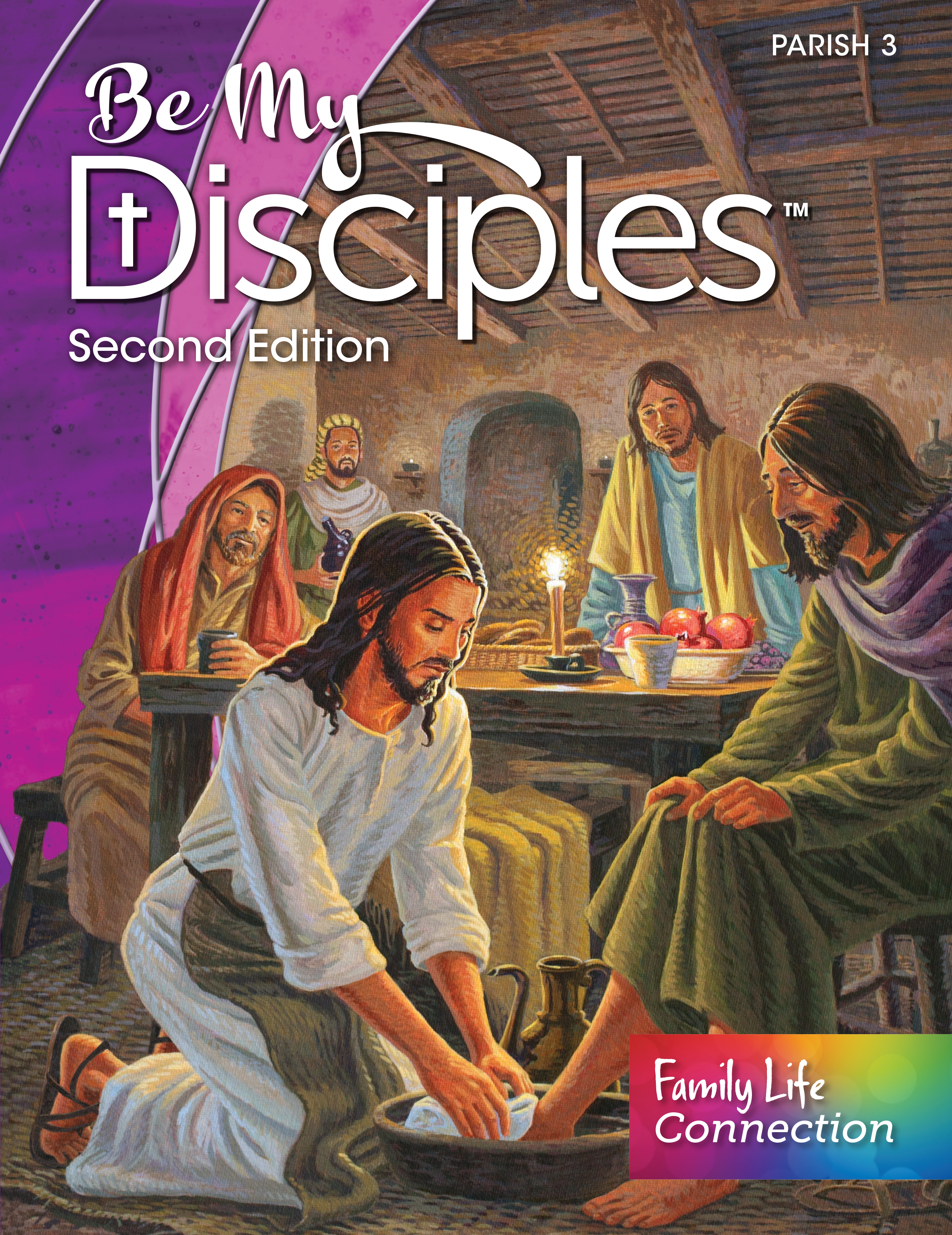 NEW! Be My Disciples Second Edition - with the Family Life Connection
NEW! Be My Disciples Second Edition - with the Family Life Connection
This new Parish Program for grades 1-6 now includes the Family Life Connection, a fantastic family resource built right into the Student Edition textbook! Students will take home this two-page insert to help them build the skills they need to live healthy, holy lives. This newly updated and expanded edition encourages children to understand their role within the parish community and continue to grow in their identity as sons and daughters of God.
In the midst of a busy school day, it can be easy to overlook one of a teacher’s most effective tools for communicating respect: the art of listening well. Listening well shows others that we value and respect them. Everyone loves to be listened to and heard, no matter their age or role in life. We have opportunities every day to affirm the precious lives of others, just by giving them our focused attention.
In The Joy of the Gospel, Pope Francis urges us: “We need to practice the art of listening, which is more than simply hearing. Listening... is an openness of heart which makes possible that closeness without which genuine spiritual encounter cannot occur. Listening helps us to find the right gesture and word which shows that we are more than simply bystanders.” (no. 171)
Here are a few suggestions for optimizing the listening efforts that you can put to work immediately in your classroom – for yourself and for students.
- Look the person in the eye when they are talking to you. ut down the book or tablet or put aside other tasks for a moment. Turn toward the person; stoop down if necessary. Stop, look, and listen.
- Repeat without judgment what they’ve said. This shows you’re listening to hear and not to defend or rebut.
- Be slow to speak. If you want someone to talk to you, you need to listen, listen, listen! We always want to put our two cents in, guide them, correct them, or offer advice. But, speaking too soon can shut off communication rather than further it.
- Ask open-ended questions, without judgment. Ask to learn more, not to subtly steer their thinking. They can sense your sincerity and interest in them.
- Share your experience and personal faith values rather than just your advice. When it comes time to respond, be open and tell what experience you’ve had with the issue at hand. Then share the values that guide your actions. Kids love to learn more about their teachers’ experiences and beliefs—as long as it’s not a lecture disguised as conversation.
Listening well demonstrates respect for others, a key principle featured in the Family Life series. For example, in Grade 5 of Family Life, Lesson 3, teaches how listening is part of honest and open communication (Student Edition, p. 25).
Jesus was a great communicator because he listened as much as he spoke. In the Gospels, we hear him asking open-ended questions that demonstrated his respect for each person. For a discussion starter on listening, check out the new Scripture videos in the Blest Are We Faith in Action grade level organizer. There you will find stories of Jesus’ method of listening to others, as in the video for Grade 3, Unit 5, where Jesus makes time to listen to Zacchaeus the tax collector.
 About the Author
About the AuthorDr. Lauri Przybysz specializes in equipping families to live their vocation to be domestic churches and signs of God’s love. Lauri received the Doctor of Ministry from the Catholic University of America, and she has been both a Catholic middle school religion teacher and a faith formation coordinator at the archdiocesan and parish levels. She is the mother of 6 children and grandmother of 21.
Product Highlight
Family Life Second Edition
Family Life Second Edition is the new edition of RCL Benziger’s leading Catholic morality education program that addresses key concerns of today’s Catholic families.
In every grade level, Family Life includes child safety education, promotes virtuous living, and strengthens Catholic identity.
RCL Benziger’s Family Life program continues to be adaptable and flexible to supplement any school's religious education program.
Prayer is turning our minds and hearts to God. In our classroom lessons, we rightly emphasize the importance of prayer in the life of a Christian. Students pray together in class, at Mass, and at seasonal events. Our dearest hope is that these lessons will translate into lifelong prayerful faith when students are not in a school or parish setting. We want them to establish a habit of prayer that they take into adulthood.
How can we better motivate young people to turn to God and open their minds and hearts to him in their daily lives? What will increase the potential for prayer to become a habit?
Teach the benefits of daily prayer. Blest Are We Faith in Action teacher’s editions have an excellent summary of “Teaching Prayer” at T30 of each level. The fourth chapter of every unit of the student book centers on “How Catholics Pray” and instructions for setting up a classroom Prayer Center. Every chapter concludes with prayer.
Promote memorization of traditional Catholic prayers. Knowing some prayers by heart makes it easier to pray when we are feeling stressed or hurried. You will find short Catholic prayers at the beginning of student editions of Blest Are We Faith in Action, Be My Disciples, and Family Life.
Begin every class and event with prayer. When the teacher says, “Let us recall that we are in the holy presence of God,” it makes a difference to the students and the teacher. Some teachers even ring a little bell or chime. All are alerted that they are in a special space.
Practice. Propose an “on-your-own challenge” to pray one time each day outside of the classroom setting, over a set period of time. We Catholics already have such a habit-forming timeframe. We call it Lent! But don’t wait until Lent to do this exercise. Thirty days is a good target.
Prayer Partners. It helps to have a buddy when you are establishing any healthy habit. Partners should meet weekly to check in with each other about how they are doing with their resolution.
Ask students to suggest non-school times when they could pray.
- “When I arrive home, I will thank God before I eat my snack.”
- “When I shut down my computer for the night, I will remember God loves me.”
- “When my feet hit the floor in the morning, I will ask God to protect me.”
- “When I brush my teeth, I will thank God for my health or pray for someone who is sick.”
Have them write down their resolution on the inside cover of their faith formation book. After 30 days, ask students to reflect on their experience and invite them to continue to practice praying daily.
Resources for Home: Catholic Prayers and Practices. These handy, portable guides help young people learn, celebrate, and reference the prayers and practices of the Catholic faith. Available in bilingual and other languages.
 About the Author
About the AuthorDr. Lauri Przybysz specializes in equipping families to live their vocation to be domestic churches and signs of God’s love. Lauri received the Doctor of Ministry from the Catholic University of America, and she has been both a Catholic middle school religion teacher and a faith formation coordinator at the archdiocesan and parish levels. She is the mother of 6 children and grandmother of 21.
Product Highlight
Catholic Prayers and Practices 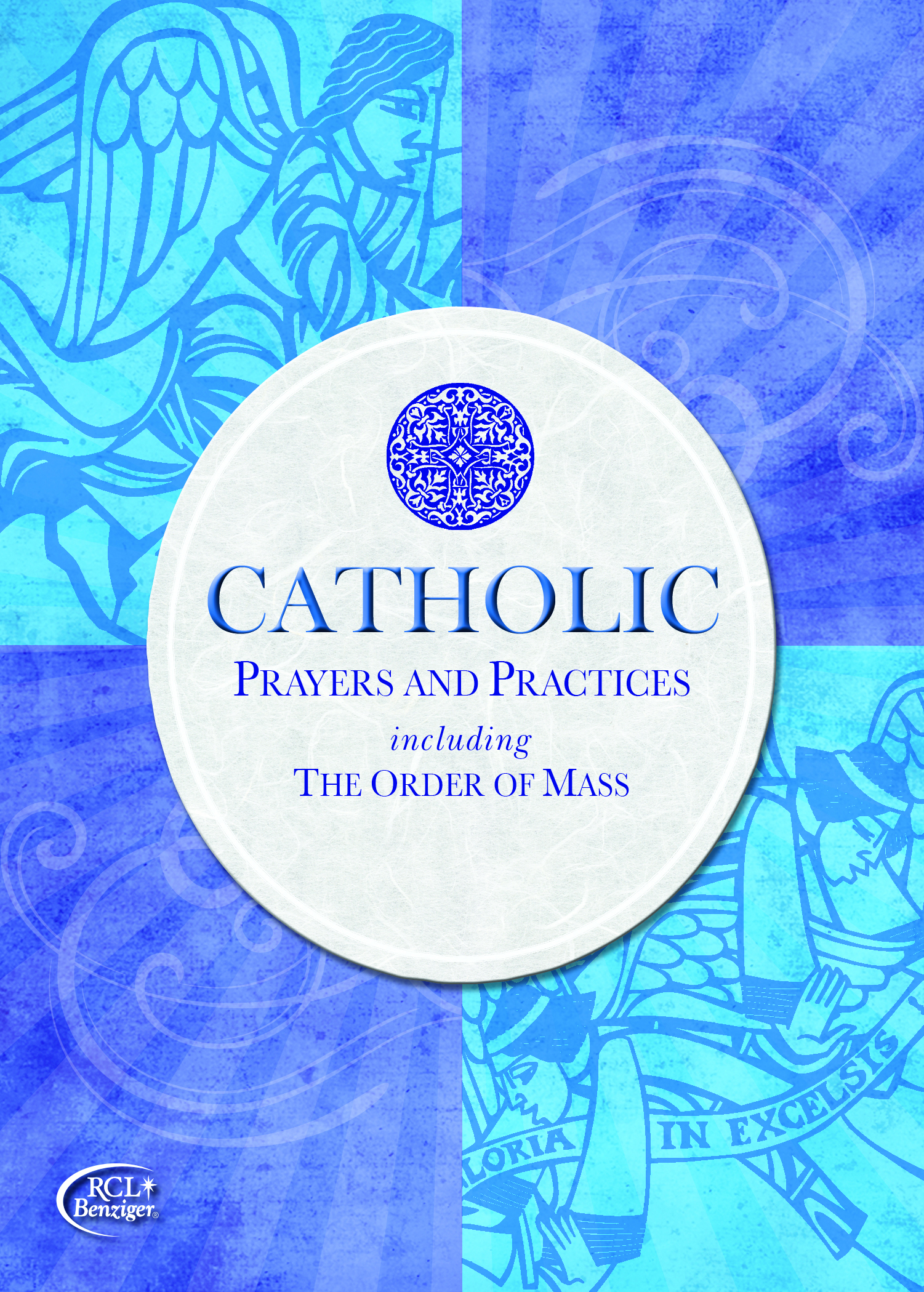
This small book, Catholic Prayers and Practices including The Order of Mass, contains traditional practices and prayers that unite us as Catholics. It is designed to support you in your faith life, and it can assist you in helping the younger members of our Church learn, grow and live as active members of the Catholic community.
This resource can be used for private, family, or communal prayer. The Order of Mass section incorporates the language of the revised Roman Missal. Share the faith by giving copies of this book to others. In this way, you are sharing in the ministry of our Lord, Jesus Christ, who called us to be His disciples and to share the Good News with all people.
Summertime is here again! And with it likely comes the relief of time to recharge, refresh, and renew your mind and spirit for the looming school year ahead.
BUT! It’s not fall just yet. Instead of focusing on launching into the school year (YET!) let’s focus on prioritizing joy in this season of self-care. As I mentioned in a previous article (link to previous article here), self-care is not selfish. A dear friend told me we should not focus on whether the glass is half empty or half full, but remember that the glass is REFILLABLE!
Below are a few strategies to help you recharge your batteries this summer and prioritize joy – building those habits we need to fall back on during, well, the fall!
- Prioritize the Little Things: Oftentimes, we think self-care or summer break needs to be filled with grand gestures, big vacations, or monumental milestones. Instead, focus on one small thing you can do for yourself each day. Perhaps it is a special ten-minute morning stretch or a ritual cup of coffee you get to drink hot and uninterrupted. Maybe it is making a commitment to yourself to put your phone away (email AND social media!) to make time connecting face-to-face. Remember these little things, because they can add up to the big things
- Let yourself feel your feelings: when my son was around 3 years old, he was upset because the baby ducks in our neighborhood had grown up and were no longer the cute little ducklings they once were. He began to cry and demanded I take a photo of him, telling me “MOM I want you to take a picture of me feeling my feelings.” Let this story be a reminder that you are allowed to feel what you need to during this season–those feelings are a gift from God. Without the everyday stressors or the mental load of working with a group of emotional, small humans, we can give ourselves the space we need to process unresolved feelings we may have. When we give ourselves the space to process those deep feelings we have been ignoring, we can help get our “ducks in a row” for the coming seasons.
- Practice juggling: I read once that life is a juggling act. Of course, we all have many things we are juggling at any given point in time. We may not realize that each ball we juggle is made of one of two things: glass or rubber. Our job is to figure out which balls are glass and will break if we drop them, or which balls are rubber and will bounce if needed. Think about the glass balls first–our relationship with those close to us, our relationship with God, and our self-care strategies; those become the glass balls we work hard not to drop. Ultimately, when we acknowledge which ones are glass and rubber, those around us will give us the grace to pick up the rubber balls when we are able to do so.
I am wishing you well this season as you earn some much-needed rest, and begin to dream about the season ahead. For now, remember to stay anchored in the present, remember the blessings with which you have, and recharge those batteries to power you through.
 About the Author
About the AuthorAmy S. Kronberg is an early learning consultant and adjunct professor at the University of Dayton. Mrs. Kronberg began her work in early childhood education at the University of Michigan-Dearborn Early Childhood Education Center, where she learned about the Reggio Emilia philosophy, child-centered curriculum, and playful learning environments. She moved to Dayton in 2013 to complete her Masters of Science in Education, studying early childhood leadership and advocacy so she could learn to support children and families in understanding the value of and celebrating play. She is currently all but dissertation in Educational Leadership at the University of Dayton and specializes in early learning consulting for local nonprofits, infant and toddler learning, and social-emotional development.
Product Highlight
Miss Debbie's Tips YouTube Page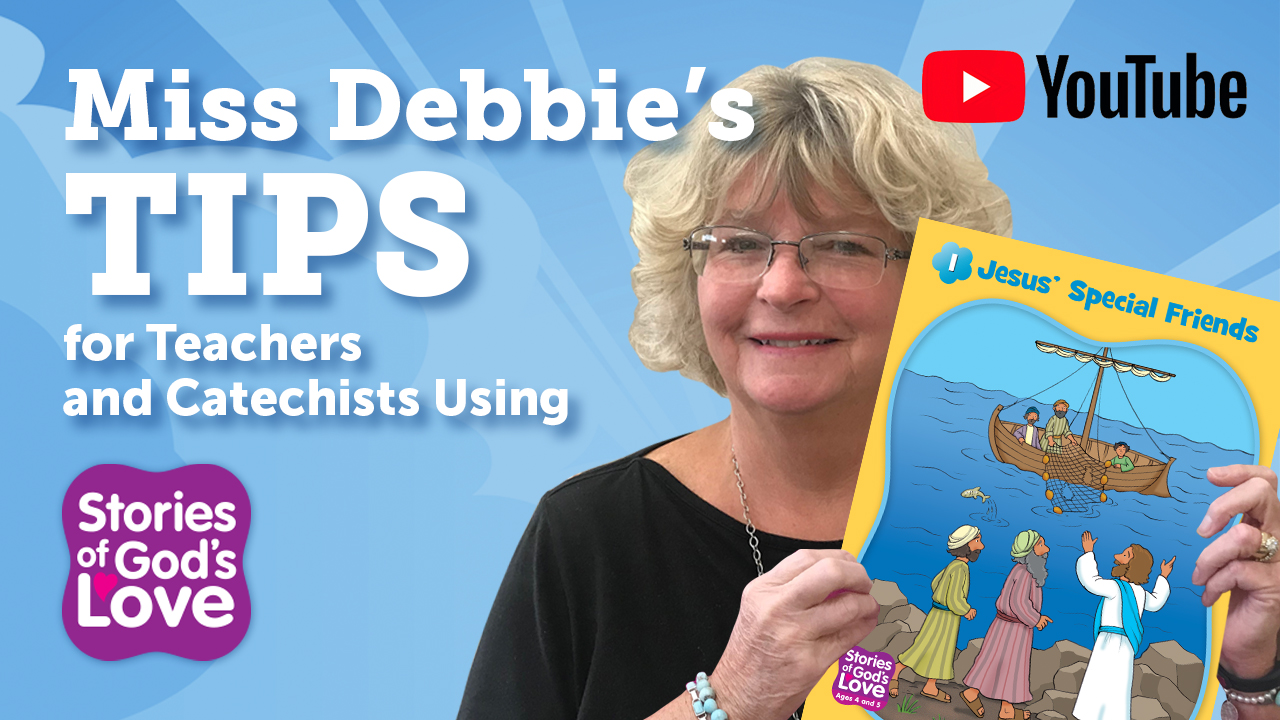
Videos for Religion Teachers and Catechists of Early Childhood Students
Please Like and Subscribe to Miss Debbie's channel and click the bell icon to get new video updates. If these videos have been a blessing to you please share them as well. Thank you and God Bless!
With the cost of everything on the rise, especially gasoline, families may be spending more time at home this summer, a disappointment for many after several summers of COVID restrictions.
The big question may be, “What are we going to do with the kids?”
There is still a place to go families can bond; children, teens, and adults can learn new things, and, best of all, it’s free—the local library. Albert Einstein would approve. It was he who said, “The only thing you absolutely have to know is the location of the library.”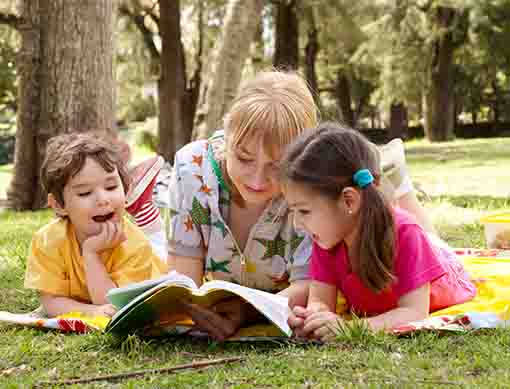
One of the great things about summer at the library is their summer reading program for kids (and for adults) helping motivate kids to read, develop a love of books, and appreciation for the library, not to mention learn any number of new and exciting things.
This year, summer reading programs in libraries across the country that belong to the Collaborative Summer Library Program will have the theme, “Oceans of Possibilities.” The theme is a plus for Catholic families, providing unlimited possibilities to help children investigate the connection between them and the earth – Pope Francis’ encyclical focuses on creation, Laudato Si, On Care for Our Common Home.
In a summer reading program, sometimes known as reading challenges, kids read books and win prizes. They log their reading and may have an opportunity to join weekly raffles for cool stuff. Often kids are encouraged to write reviews of the books they read to earn badges or additional prizes.
If your children enjoy more spontaneity and less record keeping, they can still wander (accompanied) in the stacks and choose the books they would like to read without having to reach a goal. It’s the reading that takes them on the most important adventures.
Personally, I still feel there’s something special about leaving the library with a few books under my arm (especially as more libraries are eliminating fines), but today there is the opportunity for ebooks and audiobooks in most libraries for those who prefer them.
You can get started by checking out your library’s website. In addition to a wealth of books, you might be amazed at the treasures there – special programs and age-appropriate activities, both in person or online, book giveaways, puppet shows, magic shows, storytelling, crafts, and STEM activities. The only way to know the extent of their offerings is to check it out.
Libraries also often keep a record of the local schools’ summer reading lists. Parents can ask that books be held for them when they become available. Librarians are known for their amazing ability to make great book suggestions if you tell them what kind of book you are looking for or to help you locate a book your child would like to read.
For families who are interested in continuing to nurture their children’s faith over the summer, reading stories is a wonderful approach. The shortlist of books, below, is recommended to me by parents. If they are not available in your library, you might ask the librarian if they can be sourced from another library or purchased for your library. Or ask the librarian to direct you to the children’s section for stories of faith. There are loads to choose from!
Recommendations:
- “Sitting Like a Saint: Catholic Mindfulness for Kids” by Dr. Gregory and Barbara Bottaro (for parents and children together)
- “Fulton Sheen and the Very Bad Week” by Bonnie J. Engstrom
- "10 Hidden Heroes" by Mark K. Shriver (seeking, finding, counting, identifying, ages 3-10)
- “Brother Sun and Sister Moon” a hymn of praise originally written by Saint Francis of Assisi in 1224 and reimagined by Katherine Paterson
- “100 Extraordinary Stories for Courageous Girls: Unforgettable Tales of Women of Faith” by Jean Fischer
- “Heavenly Hosts: Eucharistic Miracles for Kids” by Kathryn Griffin Swegart
- “God’s Superheroes: Amazing Catholic Men” and “God’s Superheroes: Amazing Catholic Women” both by Mary Bajda
Consider supplementing your knowledge of Laudato Si with RCL Benziger’s free downloadable resources, which include Activities for Children for a Better World. The first theme discussed is water (perfect for this year’s summer reading program!) followed by endangered animals, recycling, consumerism, building a world to give our children, the dignity of all human people, and gratitude.
 About the Author
About the AuthorMary Regina Clifford Morrell, mother of six and grandmother to nine, is a Catholic journalist, author, and syndicated columnist who has served the dioceses of Metuchen and Trenton, New Jersey, and RENEW International in the areas of catechesis and communication.
Product Highlight
Be My Disciples — Summer Program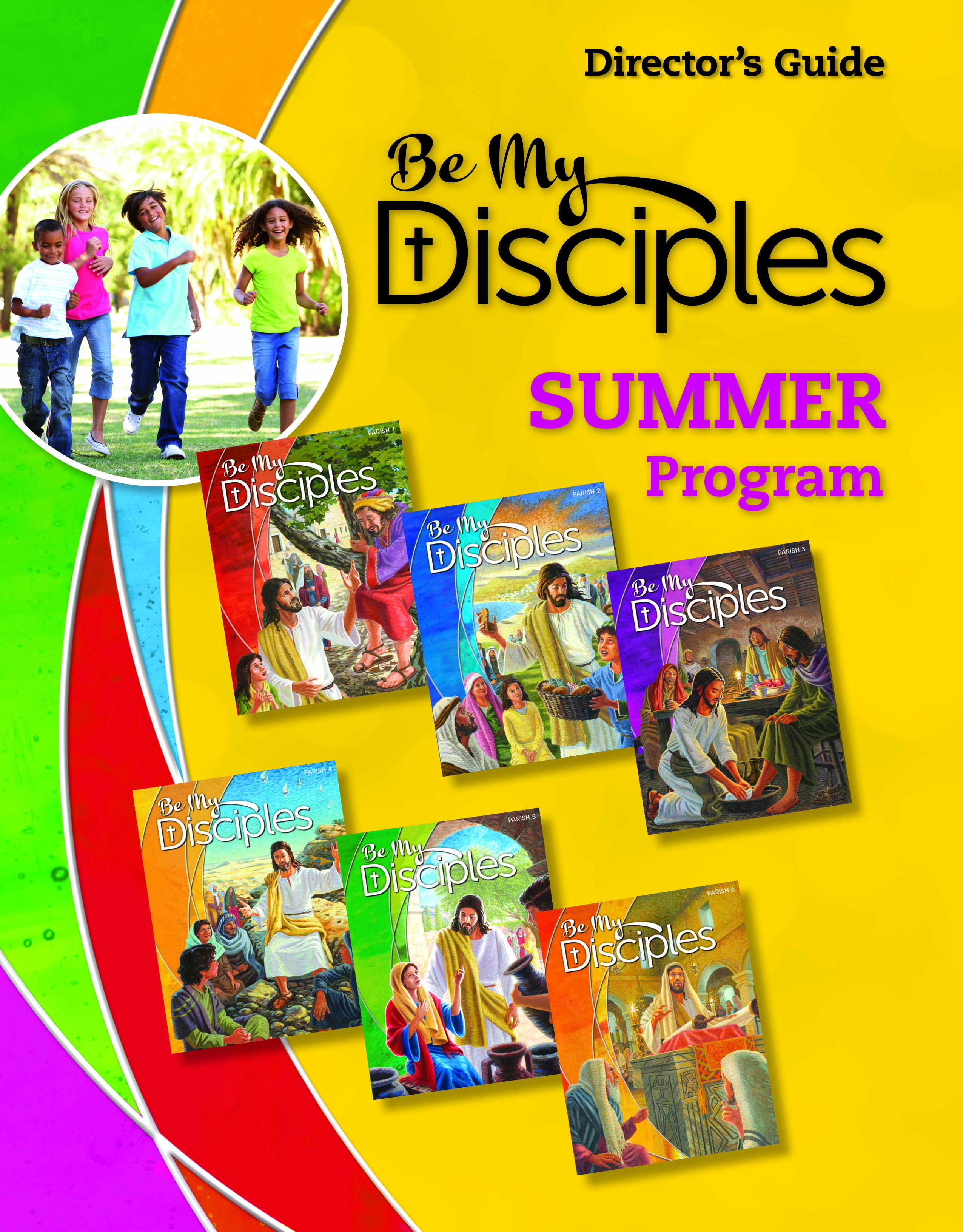
This complete resource helps parish catechetical leaders adapt the Be My Disciples program for use in a two- or three-week summer program format.
by Dr. Lauri Przybysz, D.Min.
Over the centuries, Christians have learned that certain practices or disciplines help keep the spiritual channels open and help keep their heart turned toward God. One of the important spiritual disciplines practiced throughout Christian history is the Pilgrimage.
A pilgrimage is more than an ordinary road trip. It is travel with a spiritual purpose. When we go on a pilgrimage, we visit a location with spiritual value and meaning. Usually, people go with a group of friends or family. Sharing the journey can be just as beneficial as arriving at the end. With a pilgrimage, the destination is important, but we know that much good can happen along the way!
Often people make pilgrimages to famous Christian shrines or churches. Your students can practice pilgrimage right on your school campus. When the weather is fair, plan a walk from your classroom to the parish church or a Marian shrine on the property. Take the long way around. When everyone arrives at the destination, lead the students in prayer.
Visiting online can be meaningful if we have the right intention. For example, invite students to take a virtual tour of the National Shrine of the Immaculate Conception in Washington, D.C.
Another kind of pilgrimage may be to a place that has personal spiritual significance because it holds good memories for us. For example, we could visit our childhood home or grandparents’ house.
Pilgrimages require planning and preparation in advance. Some planning is practical to ensure a smooth journey. Other preparation is spiritual, readying our hearts to receive the graces God wants to give us along the way and when we arrive.
Play a Pilgrimage Game: One person is going on a pilgrimage, and each person has to say what they are bringing along. This game can be played with two or more people.
- First, identify the destination for the pilgrimage.
- Each person thinks of two people they will pray for when they get there.
- Player 1 starts by saying, “I am going on a pilgrimage, and I will bring… (and chooses an item, e.g., sandwiches, extra socks, a rosary, flowers).
- Player 2 then repeats what the first person said and adds something of their own. So, for example, “I am going on a pilgrimage, and I will bring some sandwiches and some flowers.
- Player 3 (or back to player 1) then repeats what the first person said; then the second person adds something of their own. So, for example, “I am going on a pilgrimage, and I will bring sandwiches, flowers, and a blanket.”
- You keep going like this for each person around the circle, and it gets more challenging to remember every item as you go. The round ends when someone cannot remember them all. Start another game if you wish.
 About the Author
About the AuthorDr. Lauri Przybysz specializes in equipping families to live their vocation as domestic churches and signs of God’s love. Lauri received the Doctor of Ministry from the Catholic University of America, and she has been both a Catholic middle school religion teacher and a faith formation coordinator at the archdiocesan and parish levels. She is the mother of 6 children and grandmother of 21.
Product Highlight
Be My Disciples Second Edition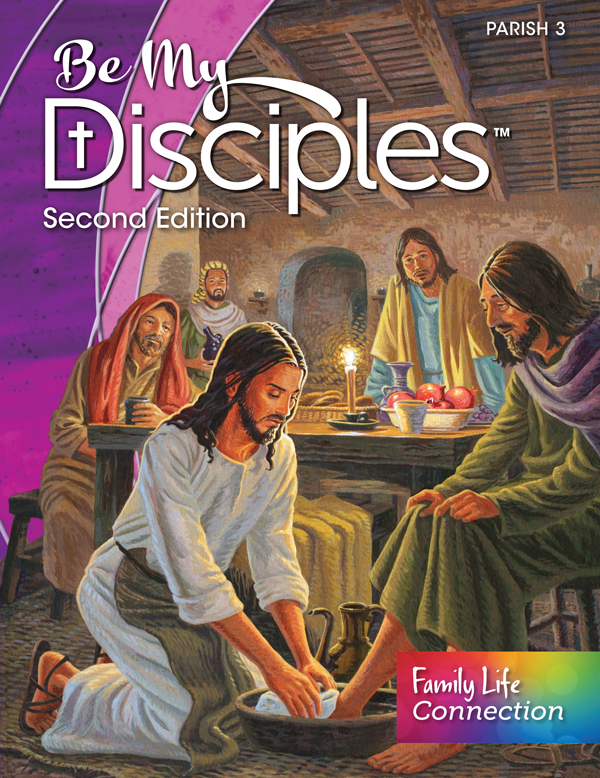
Religious Education for Parishes
This new Parish Program for grades 1-6 now includes the Family Life Connection, a fantastic family resource built right into the Student Edition textbook! Students will take home this two-page insert to help them build the skills they need to live healthy, holy lives. This newly updated and expanded edition encourages children to understand their role within the parish community and continue to grow in their identity as sons and daughters of God.
Pagination
Latest
Categories
Archives
- February 2015 (2)
- March 2015 (2)
- April 2015 (5)
- May 2015 (3)
- June 2015 (6)
- July 2015 (3)
- August 2015 (5)
- September 2015 (5)
- October 2015 (4)
- November 2015 (2)
- December 2015 (1)
- February 2016 (2)
- March 2016 (1)
- April 2016 (2)
- May 2016 (2)
- July 2016 (2)
- August 2016 (2)
- September 2016 (1)
- October 2016 (5)
- November 2016 (1)
- December 2016 (3)
- January 2017 (2)
- February 2017 (3)
- March 2017 (2)
- April 2017 (1)
- June 2017 (2)
- July 2017 (2)
- August 2017 (1)
- April 2018 (1)
- October 2018 (2)
- December 2018 (2)
- February 2019 (3)
- March 2019 (2)
- April 2019 (2)
- May 2019 (3)
- June 2019 (1)
- July 2019 (16)
- August 2019 (8)
- March 2020 (4)
- April 2020 (6)
- May 2020 (8)
- June 2020 (7)
- July 2020 (5)
- August 2020 (7)
- September 2020 (4)
- October 2020 (5)
- November 2020 (9)
- December 2020 (11)
- January 2021 (10)
- February 2021 (8)
- March 2021 (5)
- April 2021 (4)
- May 2021 (4)
- June 2021 (5)
- July 2021 (2)
- August 2021 (3)
- September 2021 (4)
- October 2021 (4)
- November 2021 (2)
- December 2021 (5)
- January 2022 (4)
- February 2022 (4)
- March 2022 (9)
- April 2022 (7)
- May 2022 (9)
- June 2022 (12)
- July 2022 (7)
- August 2022 (10)
- September 2022 (9)
- October 2022 (11)
- November 2022 (8)
- December 2022 (7)
- January 2023 (2)
- February 2023 (10)
- March 2023 (9)
- April 2023 (10)
- May 2023 (8)
- June 2023 (4)
- July 2023 (3)
- August 2023 (2)
